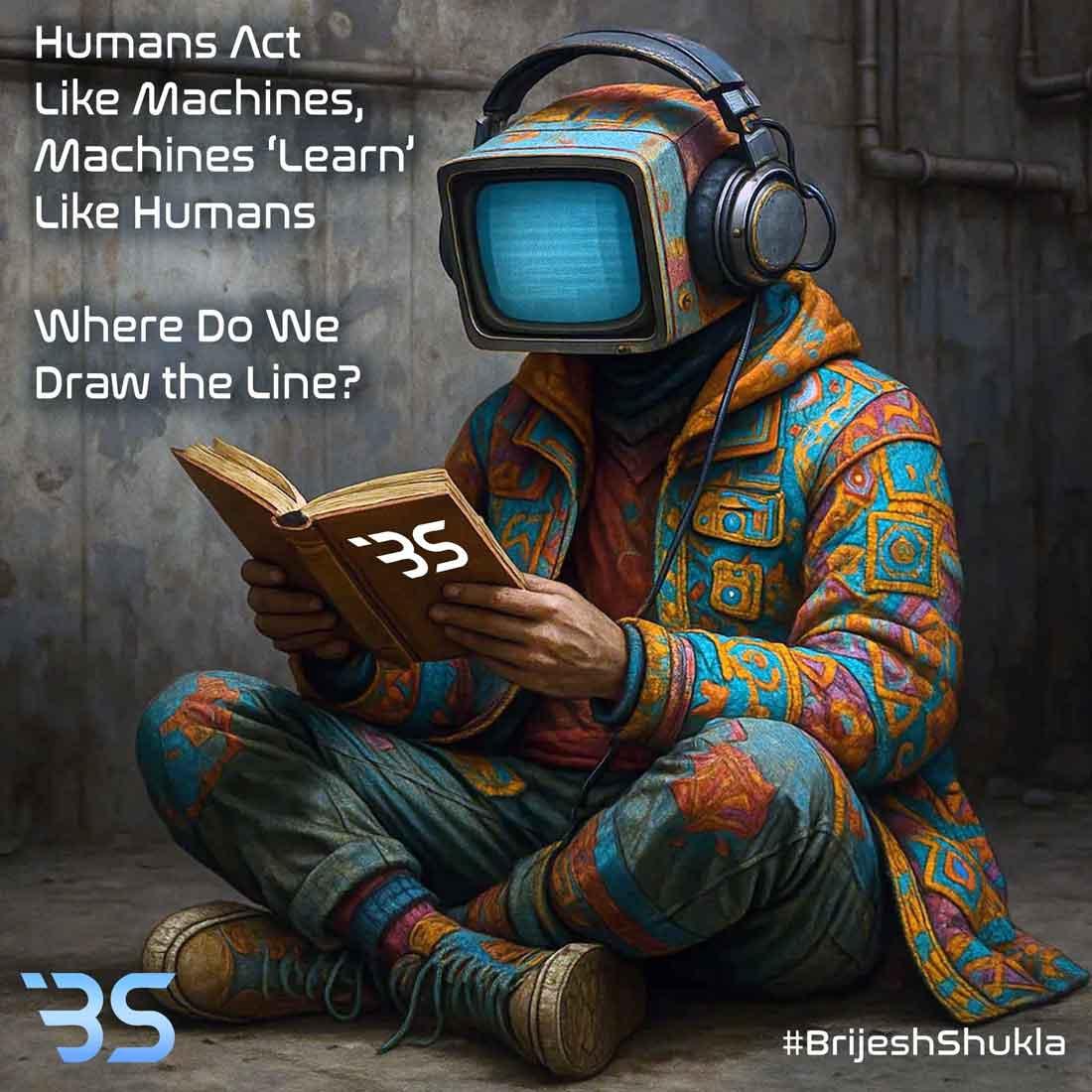Brijesh Shukla
Brijesh Shukla (Mr. Brilliant) AI - Artificial Intelliigence

We live in an era where the boundaries between human intelligence and artificial intelligence are blurring at an unprecedented pace. Humans are becoming more mechanical in their routines, while machines are becoming more human-like in their learning. This convergence raises a critical question: Where do we draw the line?
Modern life has conditioned us to function like algorithms:
Predictable routines – Wake up, work, consume, sleep, repeat.
Emotional detachment – Scrolling mindlessly, reacting to dopamine-driven notifications.
Standardized thinking – Education systems and corporate cultures reward conformity over creativity.
We pride ourselves on "productivity hacks," optimizing every minute like machines—yet, in the process, we risk losing what makes us truly human: intuition, spontaneity, and emotional depth.
Meanwhile, artificial intelligence is evolving in eerily human ways:
Deep learning – Neural networks mimic the human brain’s ability to recognize patterns.
Natural language processing – AI like ChatGPT engages in conversations almost indistinguishably from humans.
Emotional AI – Machines can now detect sentiment, replicate empathy, and even create art.
The more data we feed AI, the more it adapts, reasons, and "thinks"—raising ethical dilemmas: Can machines develop consciousness? Should they?
The paradox is undeniable:
Humans are reducing themselves to code-like efficiency, stripping away unpredictability.
Machines are absorbing human-like traits, becoming more adaptive and "alive."
This convergence forces us to confront:
If a machine can write poetry, does that devalue human creativity?
If humans act on autopilot, are we any different from programmed robots?
The answer isn’t in rejecting technology but in reclaiming our humanity:
For Humans → Break free from mechanical living. Embrace curiosity, imperfection, and emotional richness.
For AI → Set ethical boundaries. Machines should enhance human potential, not replace human essence.
We stand at a crossroads one where we must decide:
Will we let machines dictate our behavior, turning ourselves into emotionless executors?
Or will we use AI as a tool while fiercely preserving what makes us human—our dreams, flaws, and irreplaceable spirit?
The line isn’t drawn by technology. It’s drawn by us.
Your email address will not be published. Required fields are marked *